For many tourists to Thailand a floating market is a must-see. Most end up visiting the market at Damnoen Saduak, a terribly over-commercialised tourist trap. Whilst almost all floating markets in Thailand have disappeared – after all, getting about by boat is for most people not part of their daily life in this age of roads, motorcycles, cars and tuk-tuks. However, a few remain, though often touched by the need to attract tourists to keep them sustainable. Two such markets are at Amphawa and Tha Kha, a few kilometres apart from each other in Samut Songkhram province, about 130 km from Bangkok, slightly inland, but very close to the Gulf of Thailand.
Amphawa is by far the better known and more popular of these two markets. At weekends Bangkokians flock in their thousands to shop and to eat here. The seafood is undoubtedly a major draw. It’s not particularly cheap, but it is astoundingly good.

Seafood at Amphawa floating market
There are also some oddities such as a fruit known as “gac” with its stunning colour. It doesn’t have that much taste, and is usually taken crushed as a drink sweetened with honey.
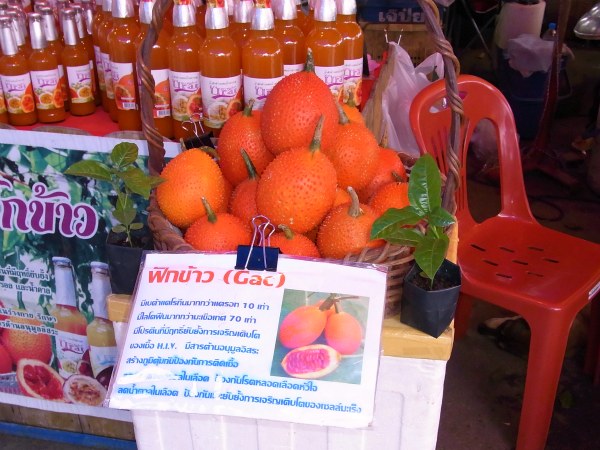
Gac fruit at Amphawa floating market
One sits at low tables alongside the khlong and orders from the vendors in the boats below.
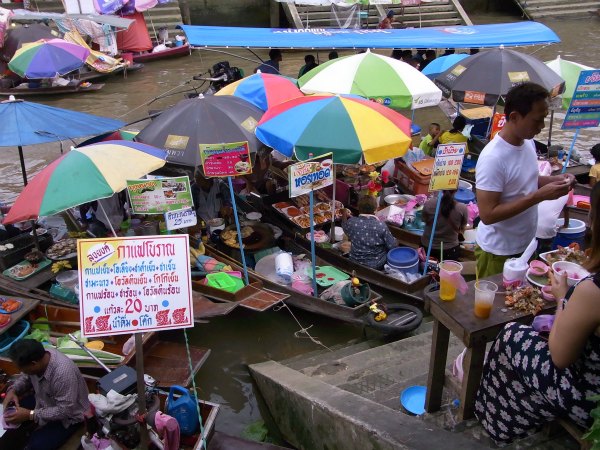
Vendors at Amphawa floating market
In the evening a boat trip to see the fireflies is a “must do”. A two hour trip by longtail boat along the river and canals which surround Amphawa is a steal at 60 Baht (just over a pound) per person. It’s delightful to see the male fireflies in the bushes at the water’s edge flash in sync in an attempt to seduce a passing lady firefly. It’s as if each bush were strung up with Christmas lights. However, the trip is less than tranquil: there are dozens of boats plying the same route with their engines roaring. Some residents, finding the noise unbearable, have taken to spraying the bushes with DDT to kill the fireflies in the hope that the tours would stop. To lose the fireflies would be a great pity, for they are quite magical.
The boat trip also threw in a couple of temples to visit – nothing particularly spectacular or out of the ordinary, though at one there was a large group of young men, and a handful of women, out on a run as part of a drug rehab programme. One young man had no shoes on and was in very obvious pain. I wondered what his story was. Was the shoelessness punishment? Could he not afford shoes? Had they been lost or stolen? Whatever the background story, it struck me as inhumane.
The boat trip also passed a controversial new hotel. To build it a number of traditional wooden houses had to be pulled down, and its scale is totally out of proportion with the surrounding buildings.

Old wooden houses and new hotel at Amphawa
The following day I visited Tha Kha floating market. It’s much smaller than Amphawa barely registers as a tourist attraction. There are perhaps no more than a dozen boats, mostly selling food.
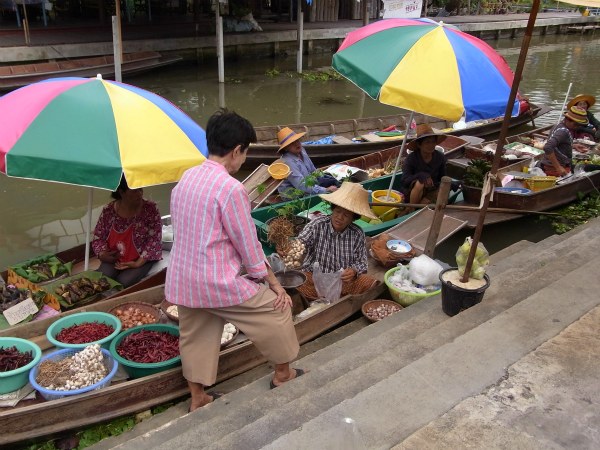
Vendors at Tha Kha floating market
This market isn’t a daily affair, but traditionally assembles four times a month according to the phases of the moon, though recently weekend mornings have been added to the schedule to draw in tourists. The food here was ridiculously cheap, with most dishes being around 20-25 Baht – less than 50 pence.
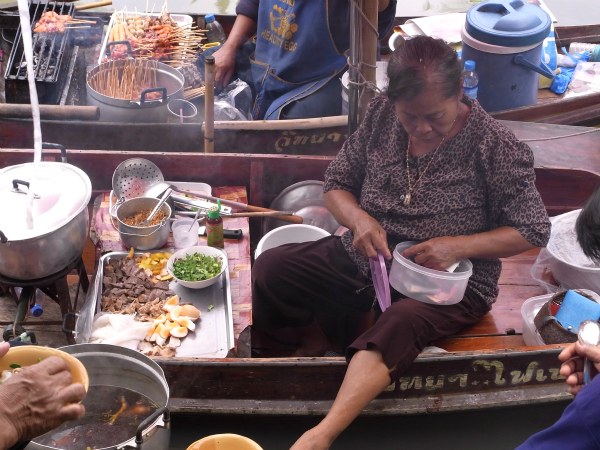
Preparing food at Tha Kha floating market
I enjoyed a thin omelette stuffed with beansprouts, grated coconut, peanuts, dried shrimp and a few other bits and pieces. The banana blossom salad, however, was rather too much on the spicy side for me – particularly without any rice to tame its fieriness.
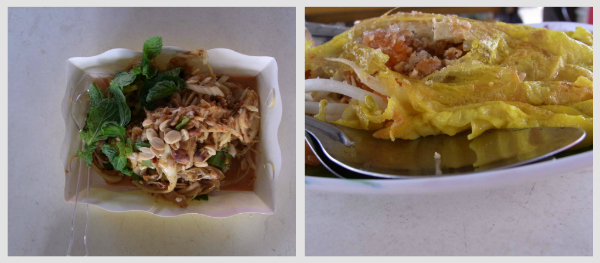
Food at Tha Kha floating market
[661]

Recent Comments